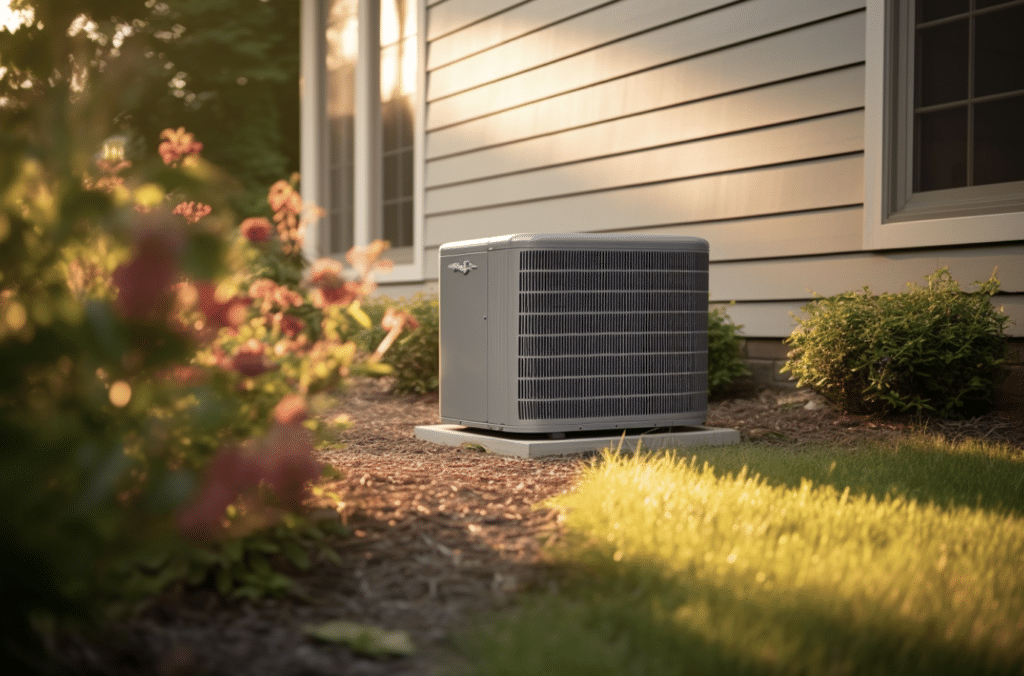Introduction – Heat Pumps: Air Source vs. Geothermal (Ground Source)
When it comes to home heating and cooling, the landscape of options can be a bit overwhelming. One common question that emerges is the difference between air source vs geothermal heat pumps. This article will provide a comprehensive comparison of these two types, dispel some common misconceptions, and guide you in making the right choice for your home.
Understanding Heat Pumps
Heat pumps are energy-efficient devices that transfer heat from a cold space to a warm space, making the cold space cooler and the warm space warmer. They work by extracting heat from the environment (air, ground, or water) and moving it indoors in winter, and doing the reverse in summer. Types of heat pumps include air source, geothermal (ground source), and water source.
Demystifying Terminology: Heat Pump vs. Geothermal vs. Ground Source
There’s often confusion around the terms heat pump, geothermal, and ground source. Geothermal and ground source heat pumps are actually the same thing. They use the earth’s nearly constant underground temperature to heat or cool your home. So, saying ‘heat pump vs. geothermal’ is somewhat of a misnomer because geothermal is a type of heat pump.
Now, even though here we’re saying heat pumps can use different sources for heat extraction, including air, ground, or water, the most common type is the air source heat pump. This is due to its relative ease of installation and lower upfront cost compared to other types. As a result, in many discussions and comparisons, you’ll find the term “heat pump” being used synonymously with “air source heat pump.” But what we’re saying here is to remember that there are other types of heat pumps, such as geothermal (or ground source) and water source heat pumps, each with its own set of advantages and specific use cases.
Air Source Heat Pumps
Air source heat pumps extract heat from the air outside your house in winter and from the air inside your house in summer. They are generally less expensive to install than geothermal systems but might be less efficient in very cold climates. Brands such as Daikin, Mitsubishi, and Carrier are known for their reliable air source heat pumps. An air-to-air system is a type of air source heat pump that transfers heat to or from indoor air.


An air source heat pump, commonly used in a mini split system, primarily consists of two main components:
- Outdoor Unit (Condenser): Located outside the house, it houses the compressor and condenser coil, which release heat to the outside during cooling mode.
- Indoor Unit (Air Handler): Positioned inside the room, it contains the evaporator coil and air handling components, absorbing heat from the interior during cooling mode and releasing heat during cooling mode and releasing heat during heating mode.
Additional components include the refrigerant lines that connect the indoor and outdoor units, a power cable, a drainage line, control wiring, and usually a remote control for adjusting system settings.
Geothermal (Ground Source) Heat Pumps
Geothermal heat pumps, also known as ground source heat pumps, use the consistent temperature of the earth as the exchange medium instead of the outside air temperature. This allows the system to reach fairly high efficiencies (300% to 600%) even on the coldest winter nights. Brands like WaterFurnace, Bosch, and Climatemaster are known for their superior geothermal systems.

A geothermal, or ground source heat pump, operates using different key components:
- Ground Loop (Heat Exchanger): A pipe system buried in the ground, filled with a heat transfer fluid, which absorbs or dumps heat from or to the ground depending on the season.
- Indoor Unit (Heat Pump): Houses the compressor, heat exchanger, and the air handler. It extracts heat from the fluid and distributes it throughout the home.
- Ductwork or Radiant Heating System: Distributes the heat produced by the geothermal heat pump through the home.
- Pump and Controller: Circulates the heat transfer fluid through the ground loop and manages the system’s operation for maximum efficiency.
Note that a significant amount of land or water source is required for the ground loop, and installation often involves considerable excavation or drilling.
Comparing Air Source and Geothermal Heat Pumps
Air source heat pumps are usually cheaper to install, ranging from $3,500 to $7,500, but their operating costs can be higher, especially in colder climates. On the other hand, geothermal heat pumps are more expensive upfront, costing between $10,000 and $25,000 to install, but have much lower operating costs due to their high efficiency.
In terms of environmental impact, geothermal heat pumps are generally more environmentally friendly as they harness stable underground temperatures, reducing reliance on electricity. However, air source heat pumps have been improving in efficiency and, when powered by renewable energy, can also be a green choice.
Making the Right Choice for Your Home
The best heat pump system for you depends on various factors including your local climate, soil conditions, space availability, budget, and energy needs. For example, if you live in a mild climate, an air source heat pump might be a cost-effective and efficient choice. However, if you live in a region with extreme temperatures and you have the budget for it, a geothermal heat pump could offer long-term savings and performance. Always consult with a professional to assess your specific circumstances and make the best choice.
Conclusion – Air Source vs Geothermal Heat Pumps
Choosing the right heating and cooling system for your home is crucial for both comfort and energy savings. Whether you choose an air source or a geothermal heat pump, understanding how each system works and their benefits can help you make an informed decision.
